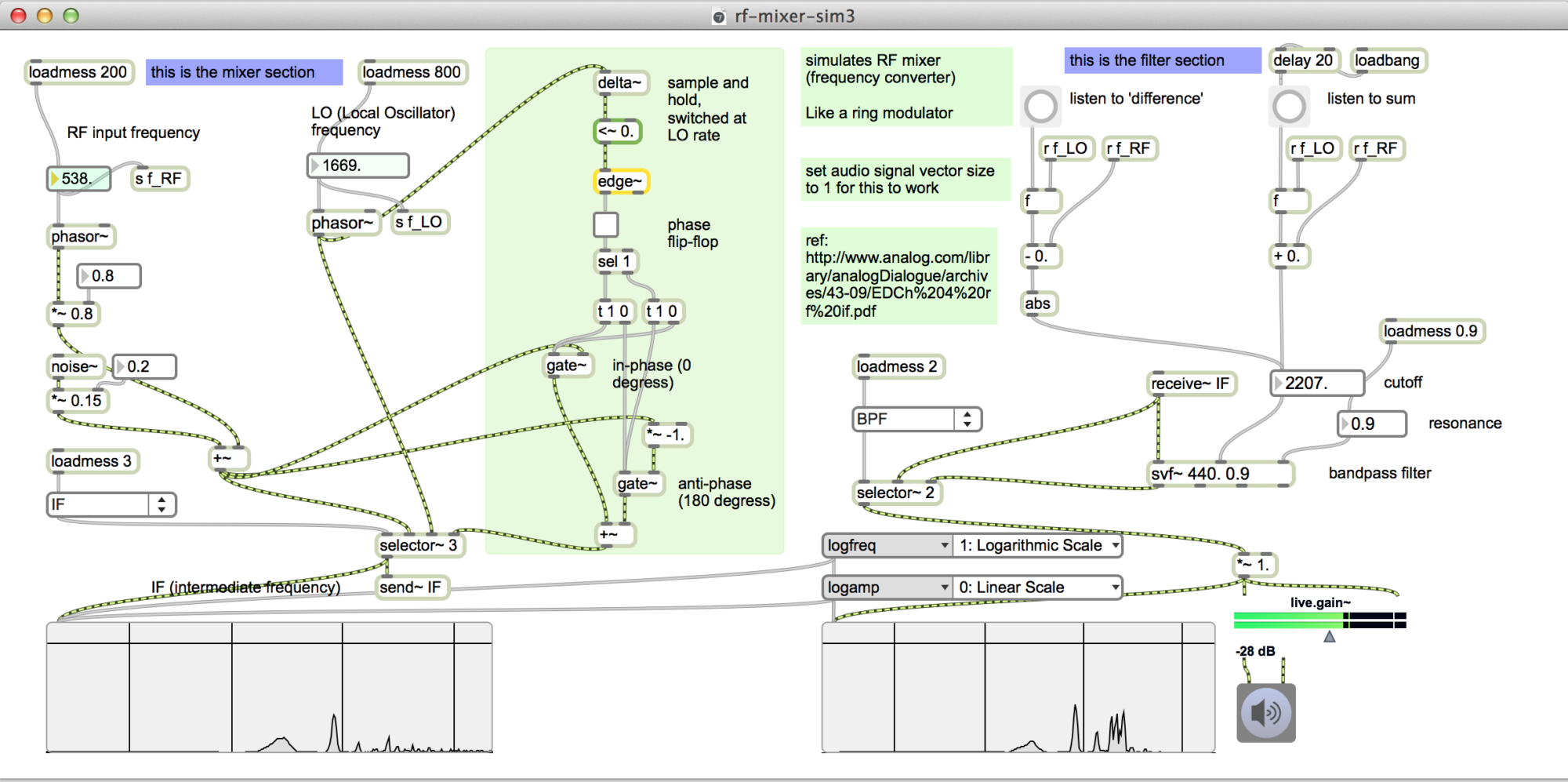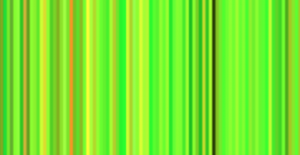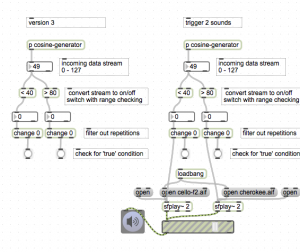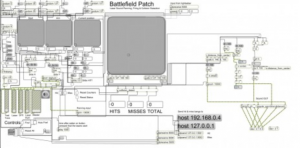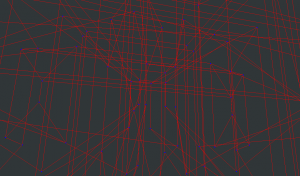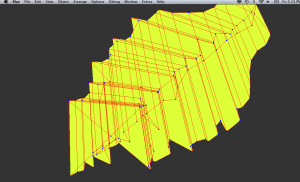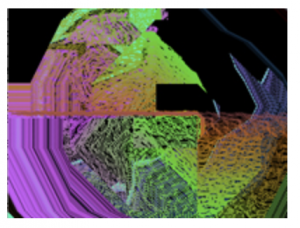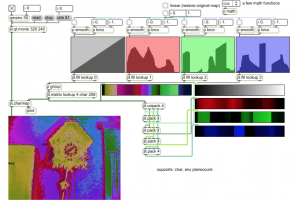Measuring rotation
We are trying to measure RPM of a bicycle wheel by reading the accelerometer data stream of a Wiimote wedged between the spokes of the wheel.
When the wii-mote is in the bicycle wheel it generates a stream of numbers much like a sine wave. Lets say we want to just get the speed of the wheel. It would be the frequency of these ‘sine’ pulses.
Strategy: use [past] object send a bang once each cycle. Then use a tap-tempo patch to convert pulses into bpm, mph, etc.,
Converting car engine sounds from Pd to Max
From “Designing Sound” By Andy Farnell
Update 6/2014: This project is at: https://github.com/tkzic/automax
original post
Yesterday I converted Andy Farnell’s car engine patch into Max. Some general suggestions about Pd to Max conversion:
- You can save the Pd patch as a .pat file and load it into Max
- [pow] object inlets reversed
- look at translations from previous post for common objects – more on this later
- I wrote a translation for [vd~] – more on that later…
- In Pd all numbers are floats – so any non-signal objects in Max need to be explicitly set to float.
- I am working to come up with a set of diagnostic tools in Pd for reading for probing into signal path, when debugging conversions.
- the Pd [inlet~] does an implicit conversion from float to signal. In Max, you need to use [sig~]
The patches are currently in my tkzic/Pd folder. Will be moving them into a specialized folder for Andy Farnell stuff.
Pd Max conversion
Suggestions from the cycling74 forums
http://www.cycling74.com/forums/topic.php?id=10122#post-54955
Max versions of Pd filters
Max/MSP Using data streams as switches
Adapted from Max/MSP Data tutorials: 1, 2, and 3
I wrote a sample patch to demonstrate triggering two different sounds from a a stream of data using the high range and low range – with a neutral zone in the middle. This patch includes a sine cosine test wave generator.
local file: max teaching examples/tz examples/working with data streams.maxpat
Sonic Saber
Using Max and Wiimote
By Matt Jarvis
Max audio visualization
In Max examples under jitter-examples/audio, are examples of cool things you can do to make audio visualizations. The example patches can be used by just feeding in some audio from another patch.
The above and below pictures were made from jit.gl.nurbs-audiorender-tz and tz-synth-4.2-visual or something like that –
Note: Local files are in the Max teaching examples/tz examples folder.
try the last presets… the presets in the jitter patch don’t restore the graphics that were happening when they are saved. I think because the settings need to be restored in a particular order – but you’ll get the idea anyway.
audio visualization
Jitter Recipes Book One
By Andrew Benson at Cycling 74
http://cycling74.com/2006/02/06/jitter-recipes-book-1/
how to create a vizzie effects module
Tutorial by Gregory Taylor at cycling74.com
